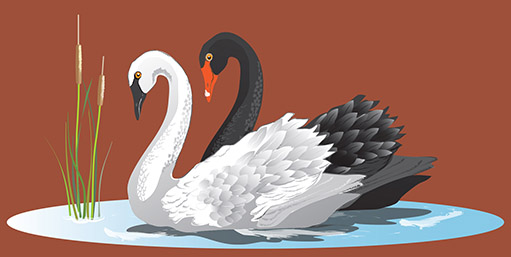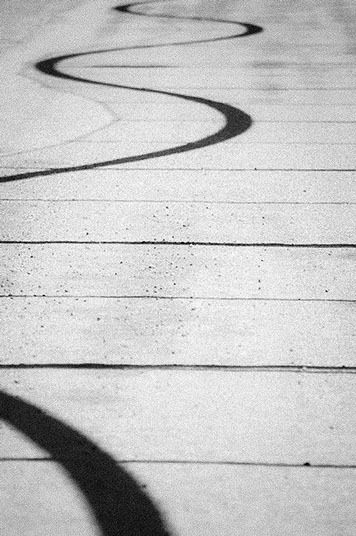Show Navigation Menu
Section Two : Becoming a Researcher/Scholar
Introduction | Comparing Ordinary and Scientific Inquiry | Scientific Reasoning |
Chapter 5: The Nature of Inquiry
Hide Navigation Menu
Home Page
Section 2 Becoming a Researcher/Scholar / Chapter 5 The Nature of Inquiry
3. Scientific Reasoning
“The question whether inductive inferences are justified, or under what conditions, is known as the problem of induction” (Popper, 1959; 2005, p. 4).
Now that the underpinnings have been provided, the next task is to explore the reasoning that makes scientific inquiry coherent. To do this requires a better understanding of the observer. What are the cognitive and behavioral traits of a social science researcher? Which necessary components precede the activity of inquiring scientifically? The following will provide some explanation of this process.
Reflecting on Heuristics
Heuristic approaches to thinking involve using rules of thumb to arrive at conclusions. Such rules of thumb are not irrational responses, as they are based upon experience, but rather, they are cognitive shortcuts that reduce the cognitive load necessary to come to conclusions (Chen, Duckworth, & Chaiken, 1999). Unfortunately, conclusions based upon these shortcuts can sometimes be inaccurate. In scientific inquiry, checking and correcting during observation and experiment are necessary to produce credible results. In science, making a correct inference requires carefully using inductive, deductive, and abductive reasoning.
Inductive, Deductive, and Abductive Reasoning
As implied by heuristics, mental acts follow a pattern. As Minnameier (2010) stated, the scaffolding of this pattern can be understood as the binding of ideas through observation to form judgments. Suppose a person lights a candle. After an hour, the same person observes the candle flickering, and then the flame ceases. One judgment might be that the melting wax extinguished the flame. This is a simple case of binding ideas through observation to form a judgment. This, however, does not preclude other reasons for the flame going out (a gust of wind or a defective wick), but it does offer a glimpse into a normal pattern of reasoning. In this same pattern, researchers use inductive and deductive reasoning to form propositions.
As Dewey (1938/1986) stated, the activities of inductive and deductive reasoning are cyclical; they are two sides of the same process of discovery. Inductive reasoning involves putting forth propositions, or claims, based upon exemplars found in experience. This occurred in concluding that the flame ceased due to melting wax. Deductive reasoning, in contrast, involves eliminating alternative explanation for the same phenomenon, such as the idea of wind as a factor in the flame ceasing. Deductive reasoning subtracts items no longer relevant because of new information, such as if it were discovered that the windows were closed. Induction then is the binding of ideas through observation to form conclusions, while deduction is the introduction of new evidence through observation to eliminate possible conclusions. This ebb and flow of reasoning, from induction to deduction and back, allows scientists to arrive at warranted assertions, inferences rigorously confirmed and, therefore, grounded through experience, in the back and forth of idea making and deduction (Dewey, 1938/1986). This reasoning does not, however, account for surprising results or provide reasons to pursue alternative explanations for such results.
Creative intuition is an indispensable but often overlooked component of reasoning in science (Policastro, 1995; Popper, 1959/2005). Contrary to putting forth probable inferences (induction) or eliminating unlikely conclusions (deduction), abductive reasoning refers to a kind of strategic guessing (McKaughan, 2008). In some cases, this kind of reasoning provides the motivation to pursue an inference that may seem improbable. In the candle example, a defective wick might have been excluded from explanation after close inspection reveals that the wick remains, but this would not absolutely exclude this conclusion as a possible direction for inquiry. In research, one must determine which paths seem worthy for exploration, at least worthy enough to expend considerable time, effort, or monetary resources. As McKaughan (2008) explained, “abductions yield recommendations about what courses of action to pursue given our values and given the information and resources at our disposal,” referred to as pursuit-worthy endeavors (p. 454).
Developing Hypotheses
Both hypotheses and propositions are predictions, but there is a difference between the two within scientific inquiry. A proposition is a conceptual prediction expressed in words, while a hypothesis is an expanded proposition that includes the criterion of testability.


Proposing an idea on logical grounds does not mean it exists, let alone that it can be tested. If a person proposes that all swans are white, this person would be making a categorical claim (Dewey, 1938/1986; Popper, 1959/2005). The person would not be making a claim about kinds of swans, or a singular swan, only an abstract claim that every creature categorized as a swan is white. Assume a person inspected 100 swans. If all swans were known to be white, the person would ordinarily expect to find that all 100 swans in the sample were white. The evidence in this sample is 100 white swans, but how exhaustive does the evidence have to be? Suppose another sample of 100 swans contained at least one that was black. As Popper (1959/2005) stated, “no matter how many instances of white swans we may have observed, this does not justify the conclusion that all swans are white” (p. 4). This is the purpose of testing a hypothesis, not to prove conclusively that all swans are white, but to provide a falsifiable backdrop to inference. This requires testing the hypothesis through experiment. To restate Popper's point, observing that all swans in the sample are white does not mean that all swans everywhere are white. It simply means that all swans in the sample are white. The phrase in the sample is the key to understanding how researchers use hypotheses in scientific inquiry. In social science, a hypothesis refers to a prediction about a sample of people. How then are hypotheses developed in social science?
A good hypothesis starts with a clear research question. The resulting hypothesis of a question that is too broad might be difficult to answer. A hypothesis based on a question that is too narrow might not be relevant enough to pursue for scientific purposes. A literature review, which involves analyzing previous empirical studies on the topic in question, is an efficient way of determining the right questions to ask. The literature review will also provide exposure to types of hypotheses previously put forth on the topic. Once questions are determined, then testable predictions can be formulated. However, not all scientific inquiry requires a hypothesis, but understanding hypothesis development will be useful where it applies, as well as helpful in contrast with scientific inquiry that does not make predictions.

In science, making a correct inference requires carefully using inductive, deductive, and abductive reasoning.